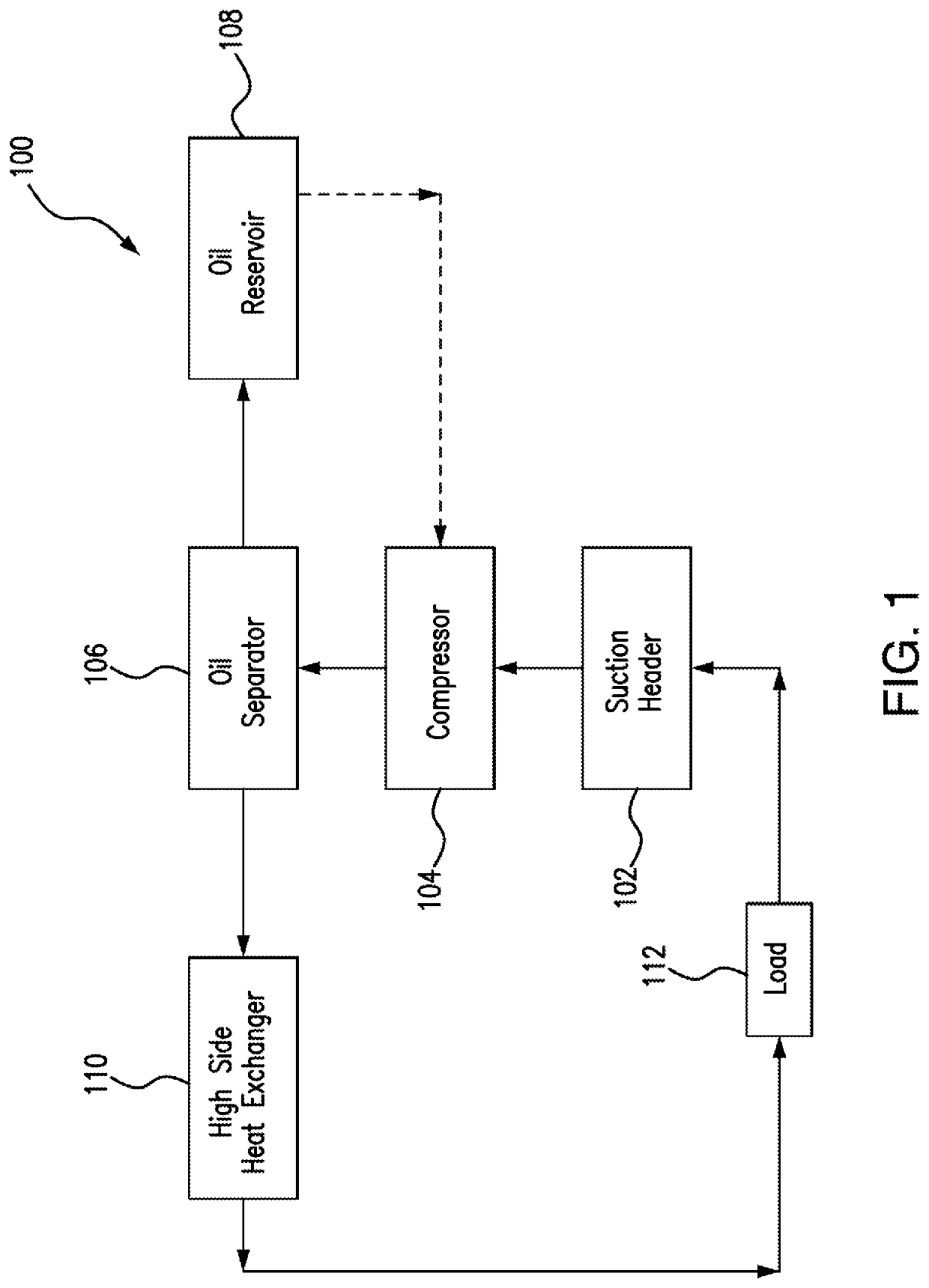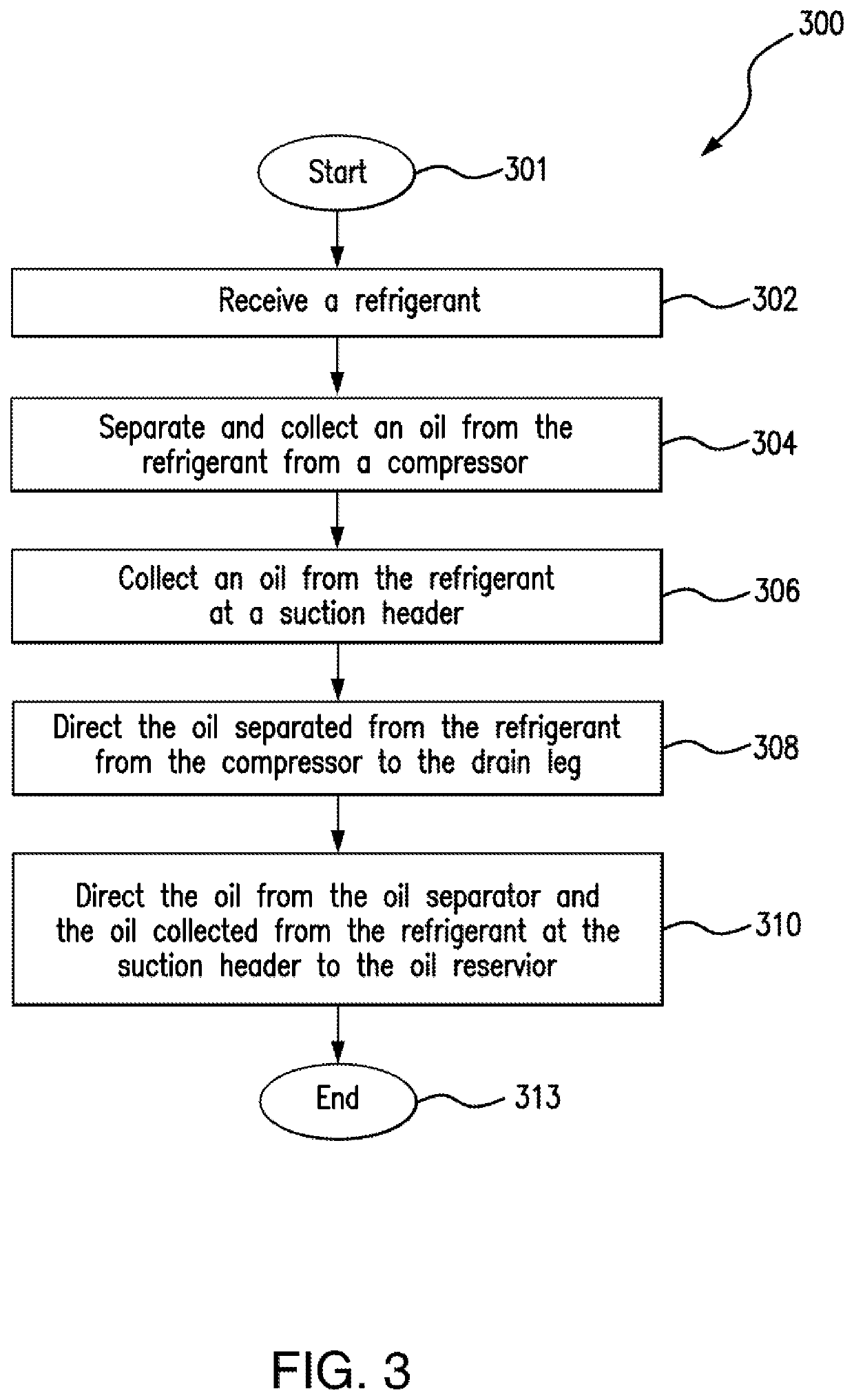Cooling system with supplemental oil extraction from refrigerant
a technology of refrigerant and cooling system, which is applied in the direction of machines/engines, positive displacement liquid engines, light and heating apparatus, etc., to achieve the effect of improving the lifespan of the system
- Summary
- Abstract
- Description
- Claims
- Application Information
AI Technical Summary
Benefits of technology
Problems solved by technology
Method used
Image
Examples
Embodiment Construction
[0013]Embodiments of the present disclosure and its advantages are best understood by referring to FIGS. 1 through 3 of the drawings, like numerals being used for like and corresponding parts of the various drawings.
[0014]A typical commercial refrigeration system includes a suction header, a compressor, an oil separator, and an oil reservoir. Compressors compress refrigerant to concentrate the heat that has been absorbed as spaces have been cooled, making it easier for this heat to be removed from the system. Compressors typically have oiled components. Oil enters the compressor in an uncontrolled manner though the suction header. Oil also enters the compressor in a controlled manner from oil reservoir, as needed. However, a problem occurs when the oil returns to the compressor from the suction header faster than it is used by the compressor. As a result, oil mixes with the refrigerant and is cycled through the other components of the system. This can shorten the lifespan of the sys...
PUM
 Login to View More
Login to View More Abstract
Description
Claims
Application Information
 Login to View More
Login to View More - R&D
- Intellectual Property
- Life Sciences
- Materials
- Tech Scout
- Unparalleled Data Quality
- Higher Quality Content
- 60% Fewer Hallucinations
Browse by: Latest US Patents, China's latest patents, Technical Efficacy Thesaurus, Application Domain, Technology Topic, Popular Technical Reports.
© 2025 PatSnap. All rights reserved.Legal|Privacy policy|Modern Slavery Act Transparency Statement|Sitemap|About US| Contact US: help@patsnap.com



